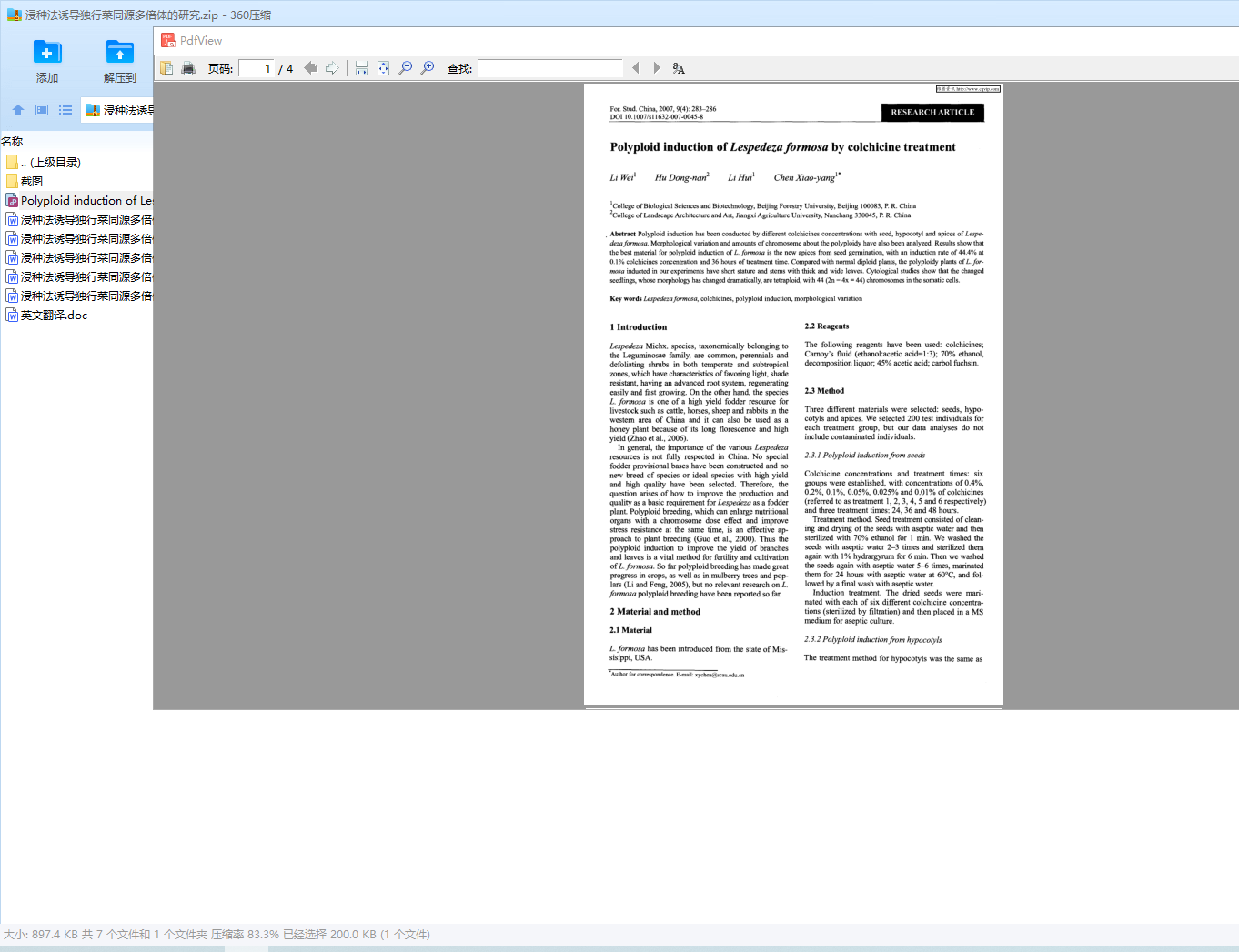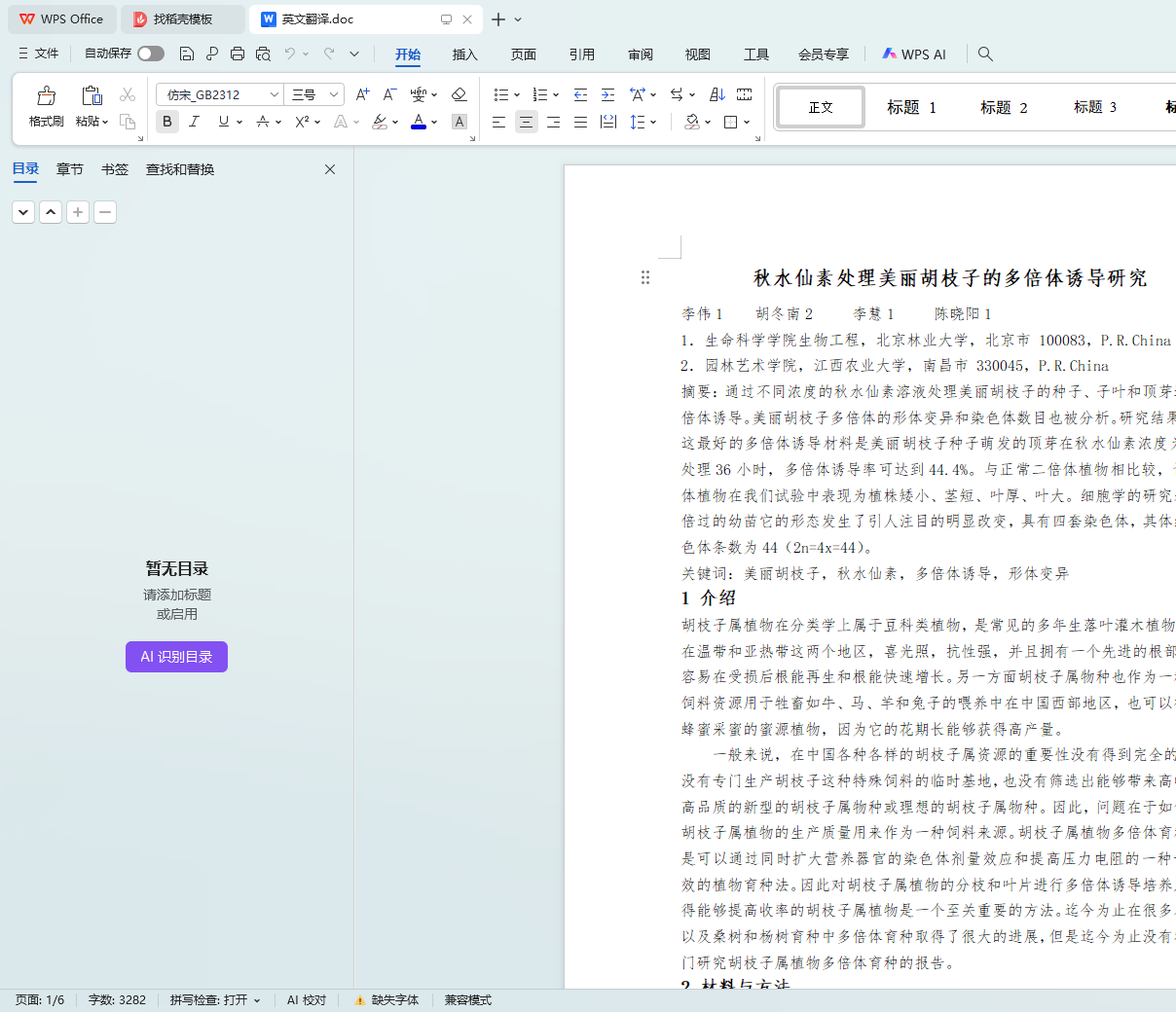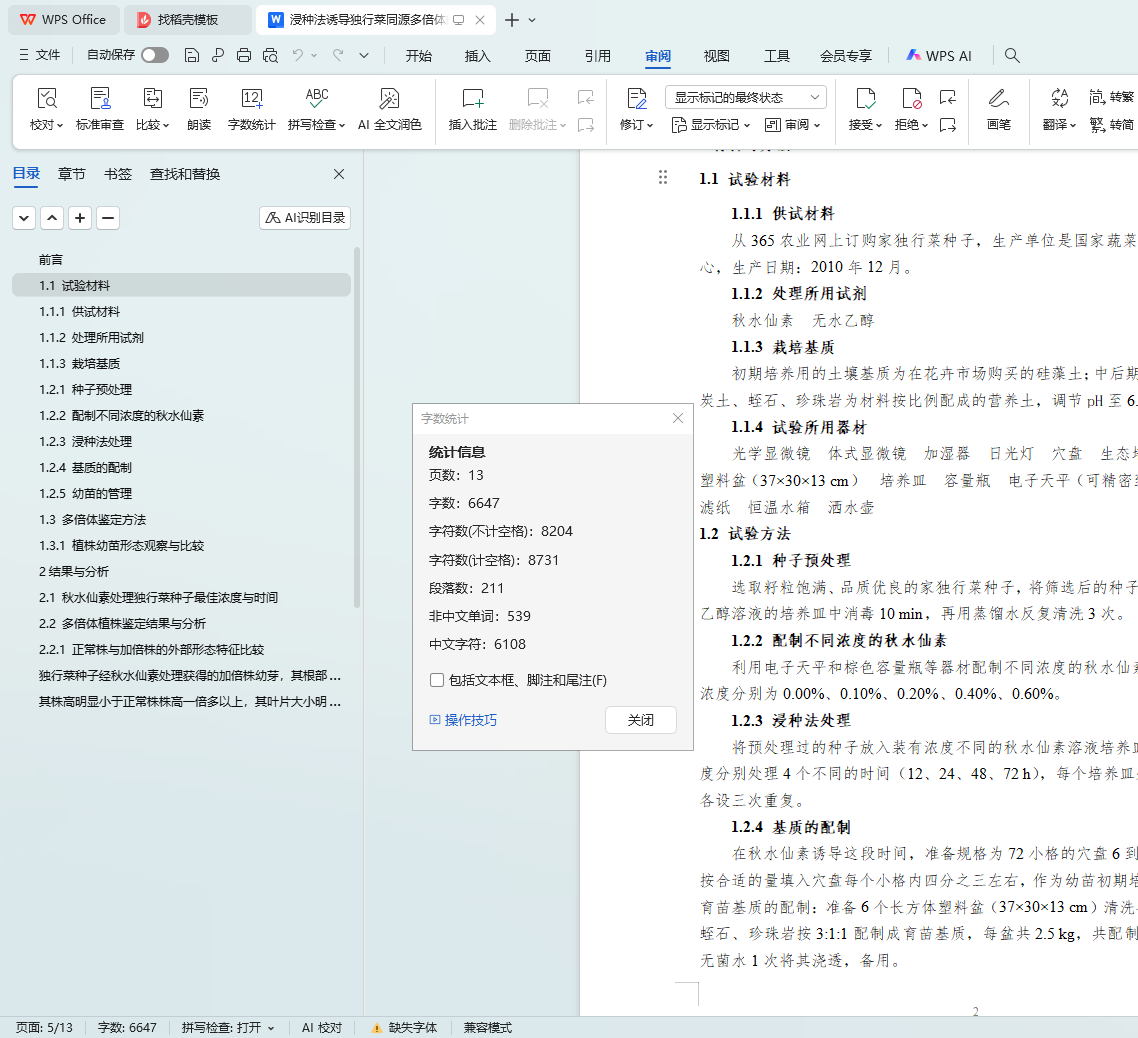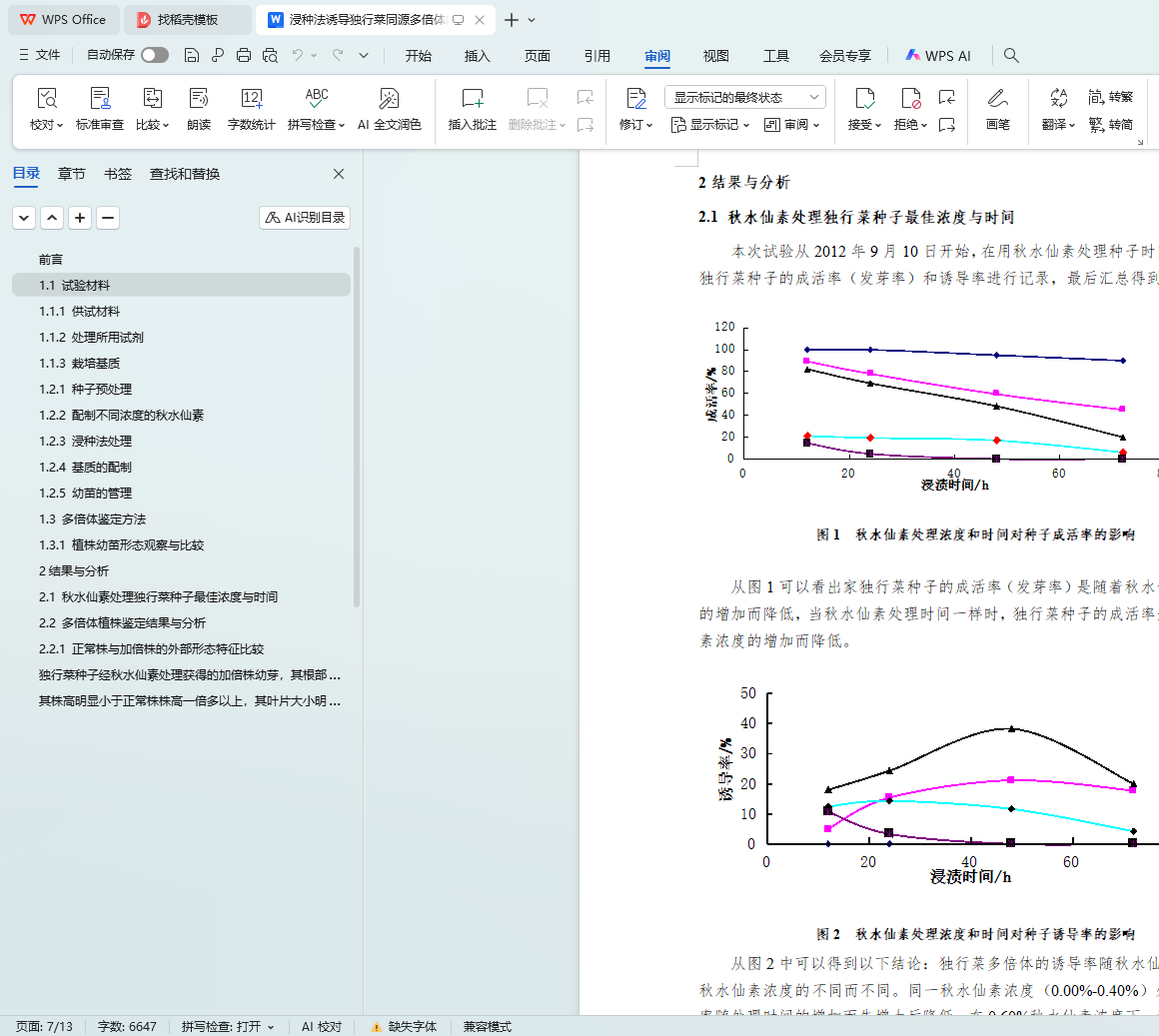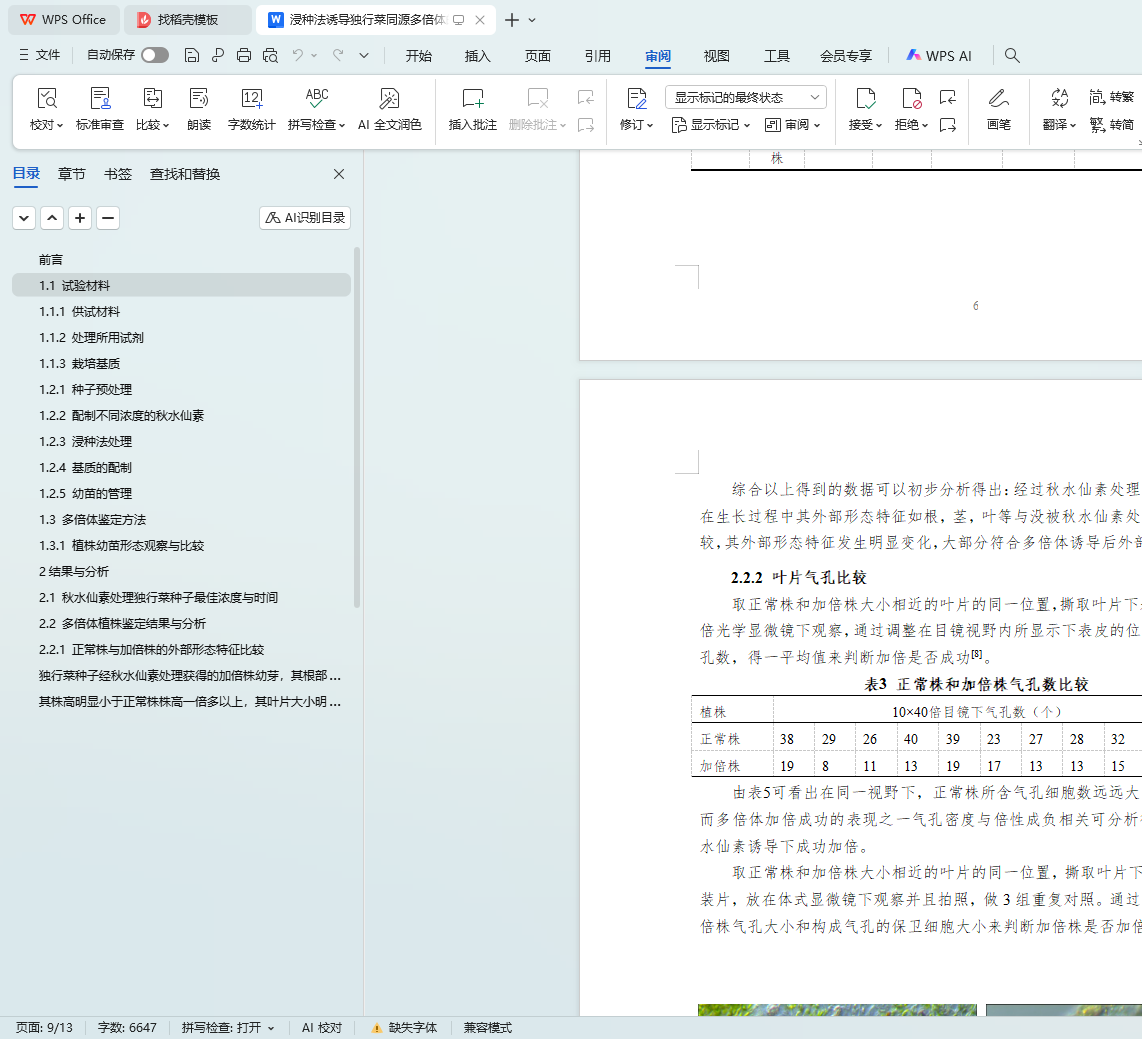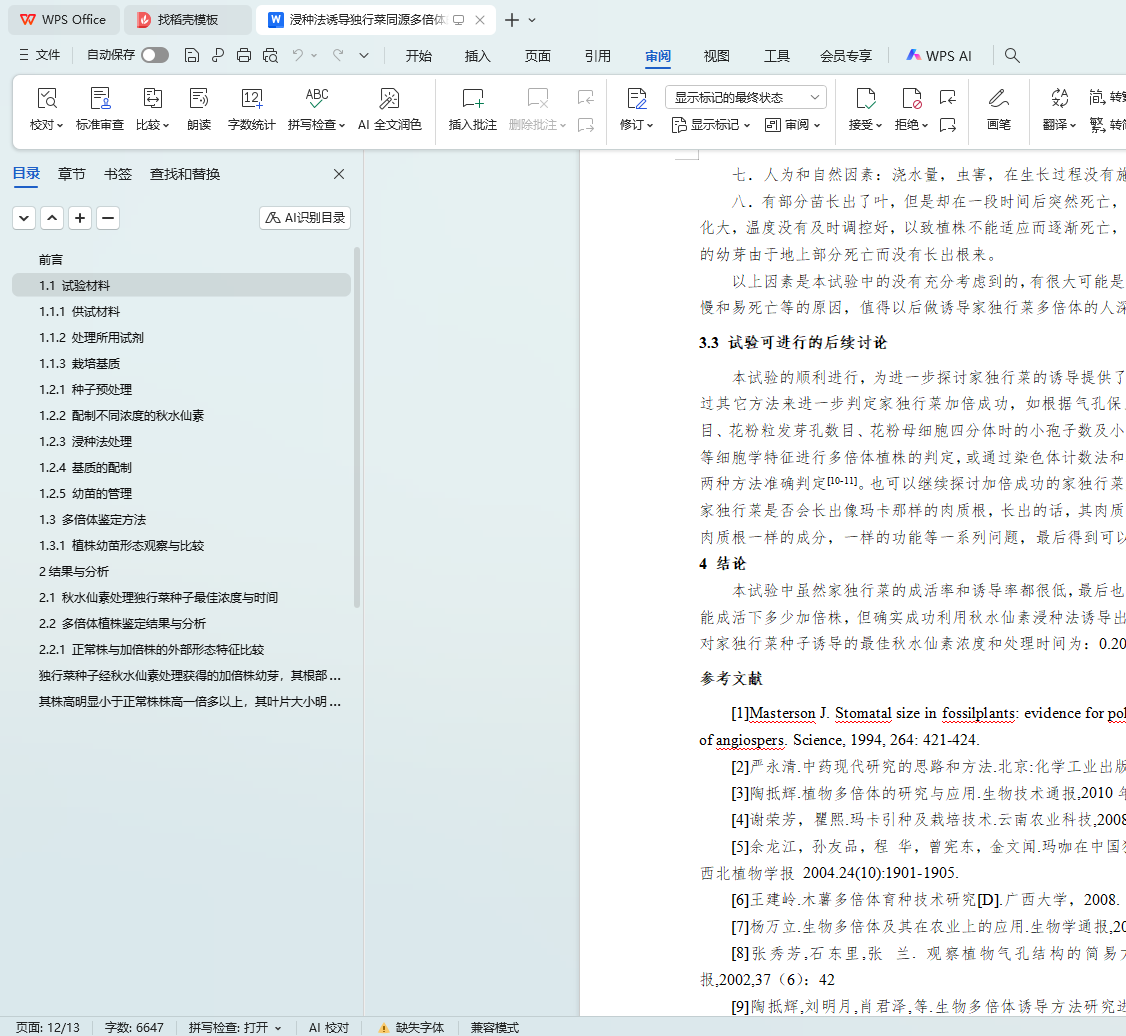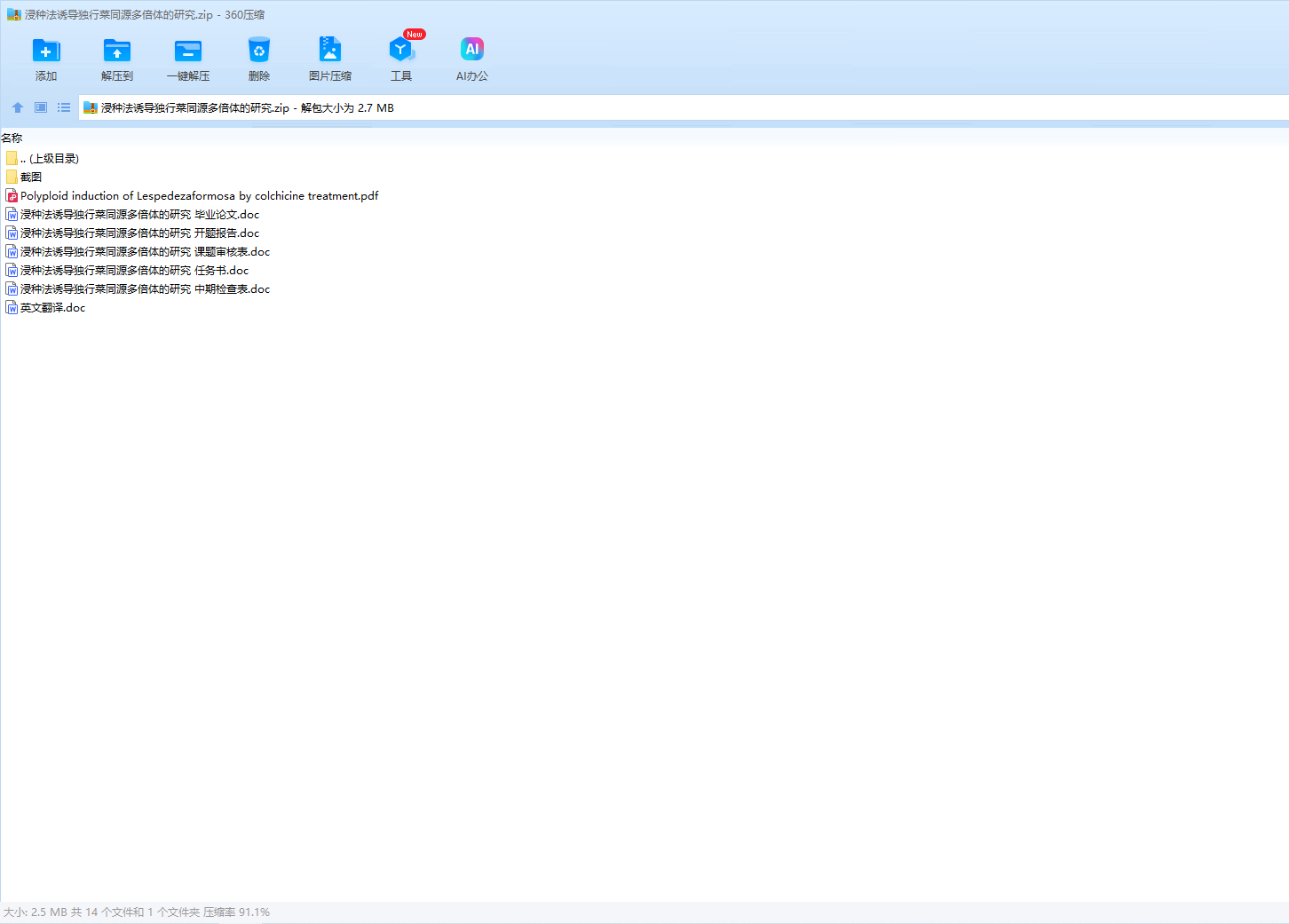浸种法诱导独行菜同源多倍体的研究
摘 要
以家独行菜的种子为试材,以秋水仙素为诱变剂诱导多倍体。用不同质量分数秋水仙素诱导家独行菜种子多倍体。本实验采用浸种法对独行菜种子进行诱导,探讨秋水仙素诱导独行菜同源多倍体的研究。结果表明:1.秋水仙素诱导得到的独行菜多倍体植株叶片变宽、肥厚、叶色深绿,根、茎粗短。2.独行菜成活率随秋水仙素浓度增加而逐渐降低。3.多倍体诱导率随秋水仙素浓度增加而先升高后降低。4.秋水仙素浓度为0.2%、浸渍种子48 h时多倍体诱导效果最佳。5.独行菜的气孔数减少。6.气孔变大。7.秋水仙素能够诱导独行菜加倍成功。8.浸种法对家独行菜诱导是可行的。
关键词:家独行菜,秋水仙素,浸种法,同源多倍体,诱导
Study on the Autopolyploid Induction of Lepidium apetalum by Seed Soaking Method of Colchicine
Abstract
Seeds of Lepidium apetalum were treated with colchicines. Seeds of Lepidium apetalum were merged into different concentrations of colchicine solution for different time.Using seed soaking method induce the autopolyploid of Lepidium apetalum seed in the experiment. The results show that: 1.The polyploid plant leaf disposed by colchicine was widen, hypertrophy, dark green leaf and the root was thick and short. 2.The survival rate of Lepidium apetalum gradually decreased with increasing concentration of colchicine. 3.Polyploidy induction rate increased at first and then decreased with the improving concentrationof colchicines. 4.The best polyploidy induction result was colchicines at 0.2% immersion seed 48 hours. 5.The stomatal number of Lepidium apetalum was reduced. 6.The stomata became bigger. 7.Colchicine could induce Lepidium apetalum to succeed. 8.Seed soaking method was feasible.
Key words: Lepidium apetalum,colchicine,seed soaking method,autopolyploid, induction
目 录
前 言 1
1 材料与方法 2
1.1 试验材料 2
1.1.1 供试材料 2
1.1.2 处理所用试剂 2
1.1.3 栽培基质 2
1.1.4 试验所用器材 2
1.2 试验方法 2
1.2.1 种子预处理 2
1.2.2 配置不同浓度的秋水仙素 2
1.2.3 浸种法处理 2
1.2.4 基质的配制 2
1.2.5 幼苗的管理 3
1.2.6 试验过程中注意事项 3
1.3 多倍体鉴定方法 3
1.3.1 植株幼苗形态观察与比较 3
1.3.2 叶片气孔观察与比较 3
2 结果与分析 4
2.1 秋水仙素处理独行菜种子最佳浓度与时间 4
2.2 多倍体植株鉴定结果与分析 5
2.2.1 正常株与加倍株的外部形态特征比较 5
2.2.2 叶片气孔比较 7
3 讨论 8
3.1 秋水仙素对诱导家独行菜多倍体的效果讨论 8
3.2 加倍株的生长过程讨论 8
3.3 试验可进行的后续讨论 9
4 结论 9
参考文献 9
致 谢 10
